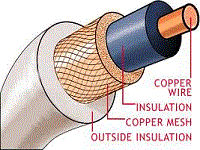Secondary Cell
As stated before, the differences between primary cell and the secondary cell are, the secondary can be recharged and the electrodes are made of different materials.
The secondary cell as shown in the illustration below, usesm sponge lead as the cathode and lead peroxide as the anode.
This is the lead-acid type cell and will be used to explain the general chemistry of the secondary.

Illustration of a secondary-cell in a battery.
In the above illustration view A shows a lead-acid secondary- cell that is fully charged. The cathode is pure sponge lead, the anode is pure lead peroxide, and the electrolyte is a mixture of sulfuric acid and water.
View B shows the cell discharging. A load is connected between the cathode and anode; current flows negative to positive as shown. This current flow creates the same process as was ex-plained for the primary cell with the following exceptions...In the primary cell the zinc cathode was eaten away by the sulfuric acid. In the secondary the sponge-like construction of the cathode retains the lead sulfate formed by the chemical action of the sulfuric acid and the lead.
In the primary cell the carbon anode was not chemically acted upon by the sulfuric acid. In the secondary the lead peroxide anode is chemically changed to lead sulfate by the sulfuric acid.
When the cell is fully discharged it will be as shown in view C. The anode and cathode retain some lead peroxide and sponge lead but the amounts of lead sulfate in each is maximum. The electrolyte has a minimum amount of sulfuric acid. With this condition no further chemical action can take place within the cell.
As you know, the secondary cell can be recharged. Recharging is the process of reversing the chemical action that occurs as the cell discharges. To recharge the cell, a voltage source, such as a generator, is connected as shown in view D. The negative terminal of the voltage source is connected to the cathode of the cell and the positive terminal of the voltage source is connected to the anode of the cell.
With this arrangement the lead sulfate is chemically changed back to sponge lead in the cathode, lead peroxide in the anode, and sulfuric acid in the electrolyte. After all the lead sulfate is chemically changed, the cell is fully charged as shown in view A. Once the cell has been charged, the discharge-charge cycle may be repeated.
(back) (top) (next) (return to batteries page)

















